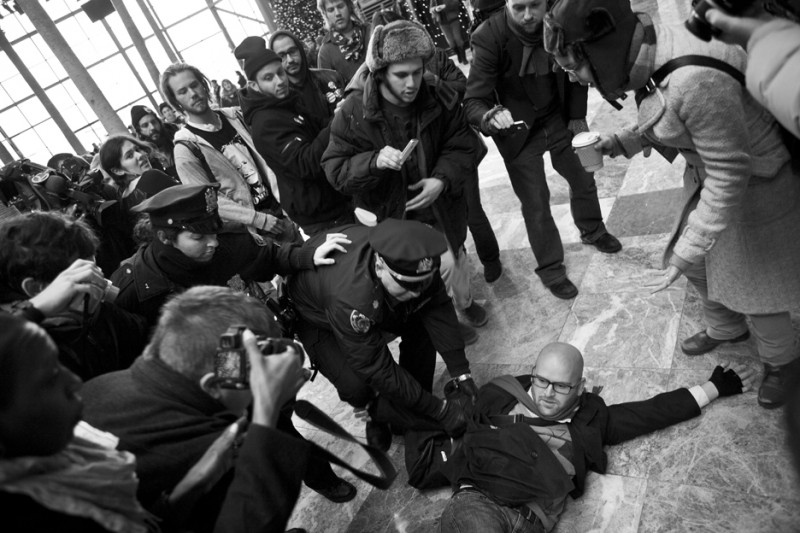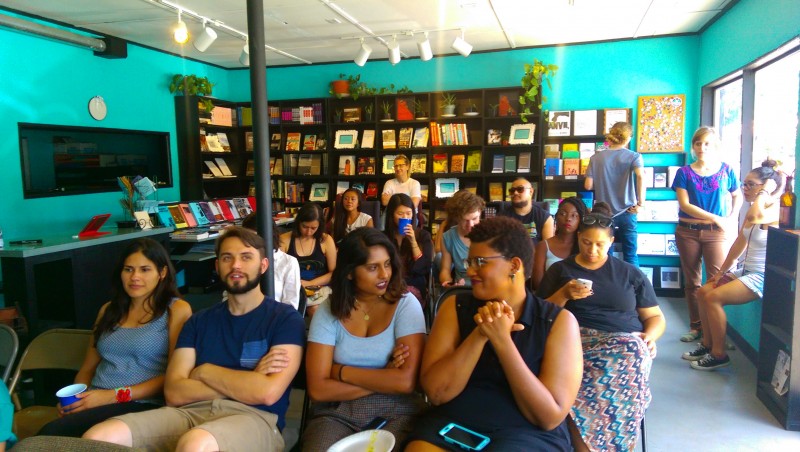Old media is dying. It’s also oppressing people on the way out by throwing a temper tantrum as it dies, and it’s hurting everybody — especially those of us who want to be journalists in a sustainable career, and for anyone who wants to reach people.
But new media kind of looks like a sweat shop! On July 1, Digiday published a study on the volume of publishing in modern online media. According to their figures, Huffington Post has 532 full time staff churning out 1,200 articles per day, with an additional 400 unpaid blog posts generated daily. Buzzfeed, the biggest “success story” of modern, list-based journalism meanwhile has 100 paid staff members producing over 350 pieces of content daily.
They both have very different models for how they work, but it’s just a standard of being a journalist today that you’re expected to work for free. And then eventually, if you’re lucky, you might also rise above some other people who are also working just as hard as you, and actually get paid for your work. Some paid writers are churning out 10 or 15 articles a day to maintain those levels of output. This isn’t sustainable.
And old agendas are getting imported into new media. I’ve been trying to give up my addiction to Stitcher, a podcasting app, because they’ve been playing advertising for the new Goldman Sachs podcast. I don’t want that on my phone! But it’s a perfect example of how old agendas are coming into our new formats. Plus, we’re still importing this idea of neutrality which is bullshit.
So here’s three major points to focus on when we imagine revolutionary media.
Revolutionary media is decentralized and diverse
The old idea of the news room is dead. Modern newsmaking no longer occurs in one central location. Rather, local reporters and citizen journalists can be connected from wherever they are to a global network of other reporters doing similar work or targeting similar issues. Social media similarly can create global solidarity and connect activists around the world. Ideally, this should allow diverse voices to speak, including the voices of minorities and oppressed groups that formerly remained voiceless in the mainstream media.
Of course, this presents new challenges — local media outlets have suffered as old media dies, and social media presents its own challenges. Many new media outlets depend on Facebook to generate page views, but Facebook is continually throttling the number of views pages receive without an expensive advertising budget. It can be difficult to figure out which networks to prioritize, as new social networks like Snapchat rise to prominence.
Of course, some of these same new tools can help create new ways to communicate and recreate that old news room feel for a new age. Recently I’ve been part of a new project that uses Slack, a mostly free hybrid of chat and email that lets reporters and editors share silly links and debate the issues of the day as well as facilitating serious work like collaboratively editing an article.

Spectators and citizen journalists film an arrest of an activist by NYPD on their smartphones and digital cameras on December 11, 2011. Social media presents new ways to reach people immediately when news happens, but also can present new challenges when networks act as gatekeepers. (Flickr / Jessica Lehrman)
Revolutionary media is not neutral or balanced
I’m a gonzo journalist, but today I would argue that the best media outlets are involved in the stories they report. We need to dispose of the idea of remaining completely neutral and balanced, removed from the story. Neutrality actually gives a voice to people who I believe are the enemies of humanity, by ensuring that “both sides” of all issues get “equal time.” Instead, revolutionary media should have a people-first agenda, always.
By putting our agenda openly on the table, it helps people “build” the news for themselves. Modern readers no longer get all their news from just one source, but instead they go to social networks and diverse websites, each creating their own idea of what happened in the world that day. By being open about what we believe and not trying to be all things to all people, including our enemies (polluters, big corporations, brutal and racist police, corrupt politicians, etc.), it lets news consumers understand where to put us when they build their daily news.
However, we still need to base our work rigorously on facts and evidence. This can mean talking to people we might disagree with, but it’s important to get the full picture to our readers. For example, I recently wrote about issues surrounding prison transportation for Truthout, and I talked to an official with the Vermont Department of Corrections. But I made sure to let the voices of former prisoners speak loudest and longest.
Revolutionary media is sustainable
Advertising isn’t enough to sustain modern journalism. It’s also a bubble economy. If you look at a banner advertisement on a news page, that website essentially rented out that little portion of space. But the company that purchased that space often resells that space again; sometimes this happens three or four times for a given banner ad. This just isn’t sustainable, and it’s a bubble that’s going to burst.
Beyond that, journalists deserve to get paid for the work they do, so they can survive and keep working. We need to look to new methods of funding, like membership, crowdfunding (but avoid Gofundme), and other forms of patronage. We also need to be transparent in how we make money and how we pay our reporters. We can strive for transparency whether we’re a cooperative, a union-based shop (like Truthout!), a nonprofit, or more traditional organizations. I’ve been soliciting pitches for a new publication I’m helping to launch, and we’re striving to be really honest with the freelancers we speak with about what we can afford to pay versus what they deserve to be paid.

Audience and participants await the start of “Imagining Revolutionary Media,” a discussion held on July 18. 2015 at Monkeywrench Books in Austin, Texas. (MintPress News / Kit O’Connell)
Mostly, all three points boil down to mutual respect and solidarity — solidarity for the people we interview, but also solidarity for media workers. I can tell you it’s a strange experience to report on the “Fight For 15″ if you’re not able to make a living wage yourself as a journo.
I’d love to hear your feedback on my points, and how you think we can create media that is decentralized and diverse, passionate but reliable, and sustainable.
Kit O’Connell is a Daily Staff Writer for MintPress News and editor of MyMPN. A writer for many years, he became a gonzo journalist full time in 2012 after being inspired by his experiences in Occupy Austin. Kit’s work, which focuses on social justice and popular protest, has also appeared on Firedoglake, Truthout, and Occupy.com.